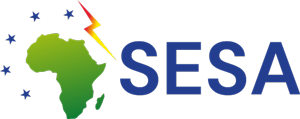Knowledge Hub
Scientific publication
Futuring from an indigenous community stance: projecting temporal duality from the past into the future
This paper presents the first instance and experience of futuring with a rural San community from the Kalahari desert in Donkerbos, Namibia. Over a series of sessions we explore divergent speculative design and design fiction methods to stimulate and invoke alternative green energy use cases. These alternatives are premised on the imagination of unorthodox green energy use, superseding interventionist energy use which is constantly propagated and mainstream. We showcase the application of speculative design and design fiction in challenging the dominant interventionist approach and singular temporal view, resulting in a dissentient dual temporality. As well as demonstrate its utility and inadequacies in transitioning an African rural indigenous community into the speculative, arguing for the appropriation and widening of futuring methods in an African context.
Scientific publication
Electric mobility initiatives in Kisumu: enablers, progress, barriers and impacts in a secondary African city
This paper examines the transition to electric mobility (e-mobility) in Kisumu, Kenya’s third-largest city, focusing on the enablers, progress, barriers, and impacts of e-mobility initiatives in a secondary African city. In alignment with Kenya’s commitment to a green economy, Kisumu has emerged as a key site for experimenting and implementing e-mobility solutions aimed at lowering greenhouse gas emissions while addressing critical transportation and energy challenges. These interventions are essential in the city’s transition towards sustainable urban mobility. The study evaluates key projects which have introduced electric motorcycles and off-grid solar-powered charging hubs in urban and peri-urban regions. The overall goal of these initiatives is to mitigate the adverse environmental footprints of fossil-based vehicles while providing socioeconomic benefits to local operators such as cost reductions and job creation. Using a mixed-method approach of systematic literature review, data collection, and case study evaluations, the paper outlines the progress of e-mobility initiatives in Kisumu highlighting successes, challenges and impacts. It reveals that e-mobility has made some contribution to emissions reductions and financial gains for boda operators while significant hurdles include inadequate infrastructure, high upfront costs, and regulatory shortfalls. The paper concludes with recommendations on how to enable the scale-up of e-mobility initiatives in Kisumu, offering important lessons for secondary cities across sub-Saharan Africa that aspire to integrate e-mobility in their sustainable urban development efforts.
Scientific publication
Assessment of the biological methane potential of different food residues from a market in Ghana for local residues valorization and biogas production
Fuel supply for cooking and heating is one of the major problems in Ghana (Africa). Firewood and liquified gas petroleum are the most used fuels, but their use has a high environmental impact, due to deforestation and CO2 emissions. Therefore, more sustainable and accessible energy technologies need to be developed.
Scientific publication
Ancestral and Cultural Futuring: Speculative Design in an Indigenous ovaHimba context
This paper presents the first instance and experience of futuring in two indigenous ovaHimba communities in northwest Namibia. Over a series of sessions, we, as part of a broad green energy access project, explore futuring to stimulate and invoke alternative green energy use cases. These alternatives are premised on the opposition of the dominant needs-based and interventionist approach and imagination of unorthodox green energy utilisation that supersedes mainstream, rudimentary and obvious energy use. We reflect on the application of futuring, particularly speculative design, in an indigenous context, highlighting the communities’ back-looking future perspective, and relevance and influence of ancestry and culture over the future. As well as accentuate the friction towards speculative design, arguing for its appropriation and alignment to a more grounded design approach. Moreover, we indicate the agency that it provides, allowing local participants to re-evaluate their values and practices and simultaneously determine the integration of technology into the future.
Scientific publication
Futuring from an indigenous community stance: projecting temporal duality from the past into the future
This paper presents the first instance and experience of futuring with a rural San community from the Kalahari desert in Donkerbos, Namibia. Over a series of sessions we explore divergent speculative design and design fiction methods to stimulate and invoke alternative green energy use cases. These alternatives are premised on the imagination of unorthodox green energy use, superseding interventionist energy use which is constantly propagated and mainstream. We showcase the application of speculative design and design fiction in challenging the dominant interventionist approach and singular temporal view, resulting in a dissentient dual temporality. As well as demonstrate its utility and inadequacies in transitioning an African rural indigenous community into the speculative, arguing for the appropriation and widening of futuring methods in an African context.
Scientific publication
Electric mobility initiatives in Kisumu: enablers, progress, barriers and impacts in a secondary African city
This paper examines the transition to electric mobility (e-mobility) in Kisumu, Kenya’s third-largest city, focusing on the enablers, progress, barriers, and impacts of e-mobility initiatives in a secondary African city. In alignment with Kenya’s commitment to a green economy, Kisumu has emerged as a key site for experimenting and implementing e-mobility solutions aimed at lowering greenhouse gas emissions while addressing critical transportation and energy challenges. These interventions are essential in the city’s transition towards sustainable urban mobility. The study evaluates key projects which have introduced electric motorcycles and off-grid solar-powered charging hubs in urban and peri-urban regions. The overall goal of these initiatives is to mitigate the adverse environmental footprints of fossil-based vehicles while providing socioeconomic benefits to local operators such as cost reductions and job creation. Using a mixed-method approach of systematic literature review, data collection, and case study evaluations, the paper outlines the progress of e-mobility initiatives in Kisumu highlighting successes, challenges and impacts. It reveals that e-mobility has made some contribution to emissions reductions and financial gains for boda operators while significant hurdles include inadequate infrastructure, high upfront costs, and regulatory shortfalls. The paper concludes with recommendations on how to enable the scale-up of e-mobility initiatives in Kisumu, offering important lessons for secondary cities across sub-Saharan Africa that aspire to integrate e-mobility in their sustainable urban development efforts.
Scientific publication
Assessment of the biological methane potential of different food residues from a market in Ghana for local residues valorization and biogas production
Fuel supply for cooking and heating is one of the major problems in Ghana (Africa). Firewood and liquified gas petroleum are the most used fuels, but their use has a high environmental impact, due to deforestation and CO2 emissions. Therefore, more sustainable and accessible energy technologies need to be developed.
Scientific publication
Ancestral and Cultural Futuring: Speculative Design in an Indigenous ovaHimba context
This paper presents the first instance and experience of futuring in two indigenous ovaHimba communities in northwest Namibia. Over a series of sessions, we, as part of a broad green energy access project, explore futuring to stimulate and invoke alternative green energy use cases. These alternatives are premised on the opposition of the dominant needs-based and interventionist approach and imagination of unorthodox green energy utilisation that supersedes mainstream, rudimentary and obvious energy use. We reflect on the application of futuring, particularly speculative design, in an indigenous context, highlighting the communities’ back-looking future perspective, and relevance and influence of ancestry and culture over the future. As well as accentuate the friction towards speculative design, arguing for its appropriation and alignment to a more grounded design approach. Moreover, we indicate the agency that it provides, allowing local participants to re-evaluate their values and practices and simultaneously determine the integration of technology into the future.
Deliverable
D7.5 Data Management Plan
A Data Management Plan will be a living document that will present the status of the project’s reflections on data management. Purpose of the document is to provide detailed information on the informed consent procedures that will be implemented regarding the collection, storage and protection of personal data that might be collected in the activities of stakeholder engagement throughout the project. The Plan will take into consideration the different methods used and purposes used for data collection and provide partners to ensure the legal compliance.
Deliverable
D7.4 Risk analysis and risk management plan
This document will present a detailed risk management plan acknowledging the probability of occurrence of identified risks or the emergence of new one establishing avoidance and mitigation actions. The plan, periodically reassessed and discussed with the Steering Group, will include an adequate measurement method of progress (risk indicators) as well as the “acceptability level” of each risk. The risks analysis will be based on the traditional “level of impact x probability of occurrence” approaches (scale 1-5).
Deliverable
D6.1 Dissemination, exploitation and replication strategy and updates
A sound and coherent strategy will be delivered to ensure an effective outreach, exploitation, dissemination and communication of the project and its wide impact. The document will include information about the visual identity of the project considering also the country specificities, identifies relevant channels and set an appropriate timeline that will also secure the engagement of all project partners and their networks. The document will be further updated to include the inputs received and adjust the strategy as needed to guarantee its success.
Deliverable
D5.2 Barriers and policy gaps to accelerating the green transition and energy access in Africa
This report covers barriers and policy gaps identified through a literature survey and stakeholder consultations for nine technologies in demonstration and validation countries (referred to as case studies); Productive Use of Solar Energy (PUE), and Electric Mobility (E-mobility) in Kenya, Clean Cooking in Malawi, Second-Life Use of EV Batteries in South Africa, PVs for Household use, and E-mobility in Morocco, Second-life Battery Use as Energy Storage for Solar Photo-voltaic Systems, and Bio-ethanol Technology for Cooking in Ghana, and Solar Irrigation in Rwanda.
Deliverable
D4.1 Five demonstration implementation plans
For all partner cities or counties, demonstration implementation plans (at least 5) will be developed (Task 4.1). By bringing together the knowledge gained in WP1, WP3 and linking to the activities planned in WP2, the plans will outline concrete steps for the demonstration phase helping to set the base for a successful implementation. The plans will include 1 modular living lab demonstration plan in Kenya, and 4 validation demonstration plans in Morocco, Ghana, Malawi and South Africa.
Deliverable
D2.1 SESA Capacity Building Plan
The aim of the plan is to provide an overview of the capacity building programme. It will be a single document resulting from the capacity and skills needs assessment on energy use in partner cities with all relevant stakeholders presenting a sound and tailored learning plan. The capacity plan will outline the learning topics/themes, the sequence, location and timing of training, capacity and skills building activities; the implementation of which will result capacity building, city-to-city cooperation and professional development
Deliverable
D1.5 Data storage repository
This deliverable report will describe the repository for managing and storing digital data for WP1 throughout the project. It will describe the key data management principles, notably in terms of data standards and metadata, sharing, archiving and preservation – activities within T1.3.
Deliverable
D1.1 Toolbox for efficient and sustainable energy use
The scalable and harmonised toolbox will be the key living repository of the project collecting the main outcomes and results produced by the SESA project across the different WPs. The toolbox launch is intended to build a structure of regular iterative updates from various Work Packages through the course of the project.


